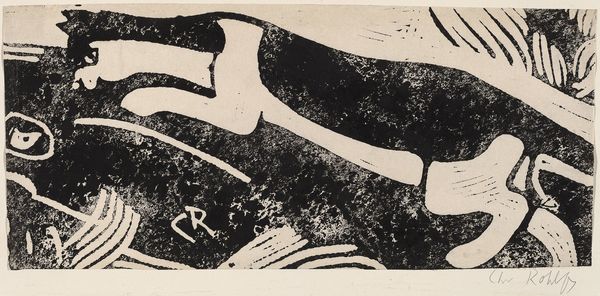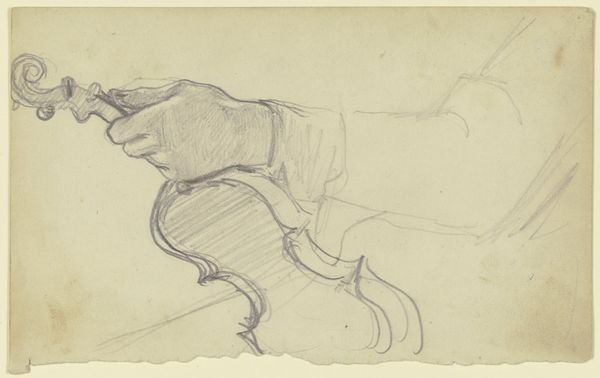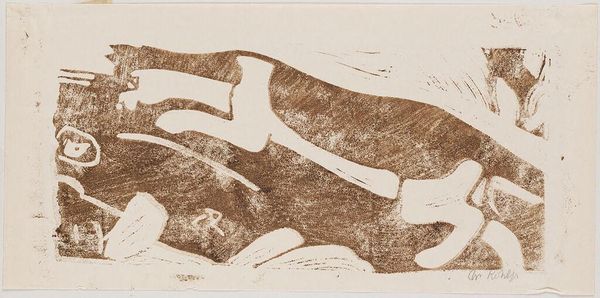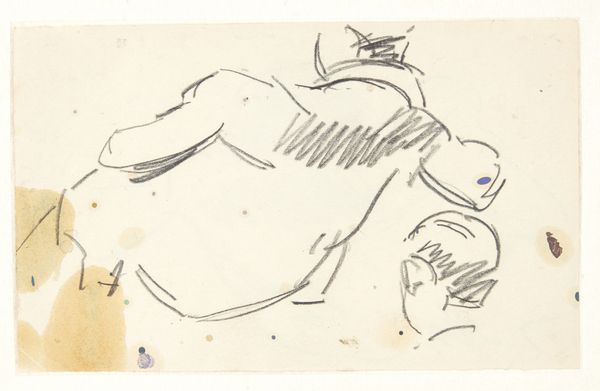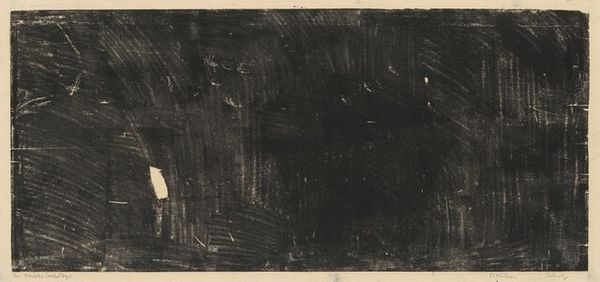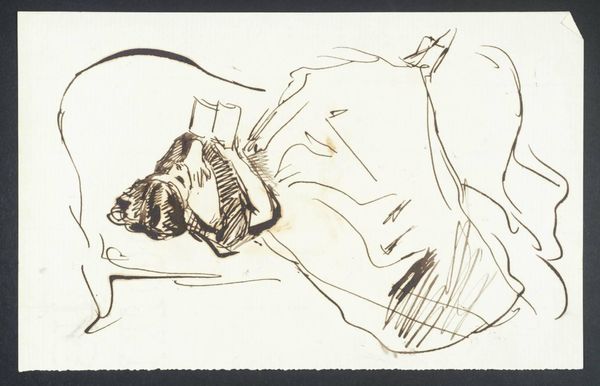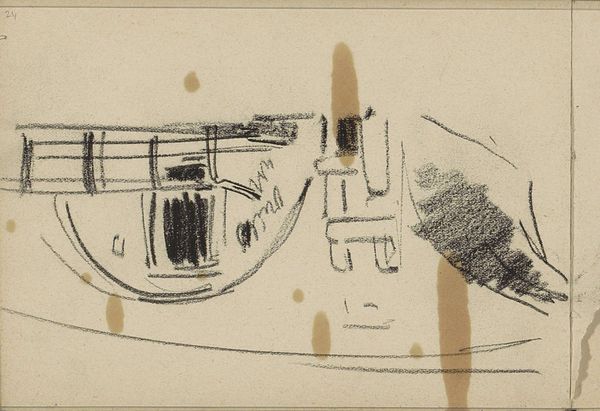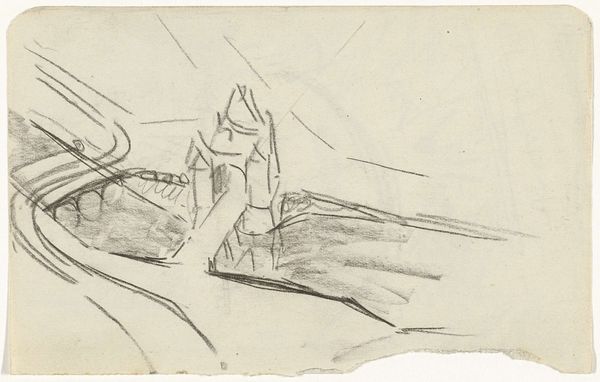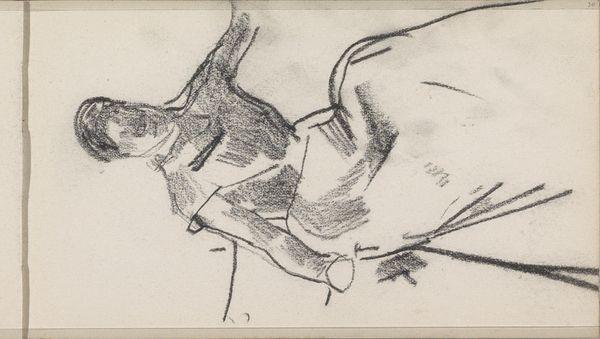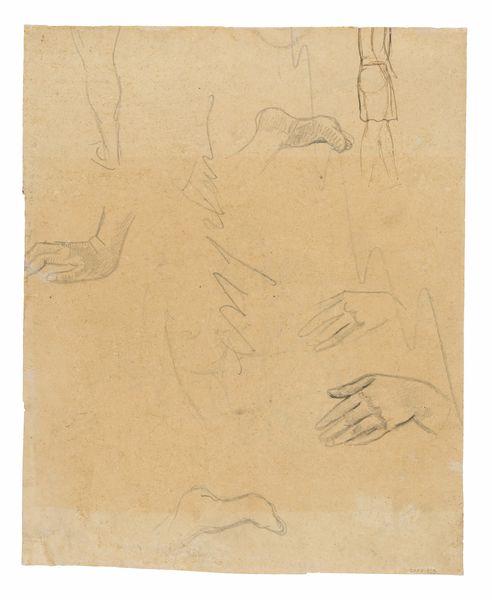
drawing, ink, pen
#
drawing
#
comic strip sketch
#
pen illustration
#
pen sketch
#
figuration
#
ink line art
#
personal sketchbook
#
ink
#
ink drawing experimentation
#
sketch
#
pen-ink sketch
#
line
#
pen work
#
sketchbook drawing
#
pen
#
sketchbook art
Copyright: M.F. Husain,Fair Use
Curator: Okay, let's look at this artwork by M.F. Husain, called "Postcard," created in 1967. It’s an ink and pen drawing on what looks like paper, very minimalist. What strikes you about it initially? Editor: Well, I am immediately struck by the simplicity, the raw energy of the lines. It feels almost childlike in its execution, yet there’s something deeply profound in its directness, like a zen koan—what is the artist showing us? What am I meant to feel from an unadorned pair of what look like limbs? Curator: It’s interesting that you pick up on that childlike quality. Husain, even within the established Indian art scene, had this rebellious streak, often sidestepping convention in favor of a more visceral, immediate mode of expression. This work almost seems to bypass academic refinement, going straight for an essence. Do you see hints of the socio-political context it emerges from? Editor: The "ordinariness" of the sketch on what’s named “Postcard” stock gestures toward the everyday experiences of 1960s India, the focus away from idealizing forms and towards documenting fleeting observations or personal reflections. It's like a snippet from a visual diary, where Husain jotted down something deeply personal— maybe a thought, or an emotion— on hand and…feet? Is that what they are? Curator: Exactly. The title invites us to see this as more than just a quick sketch. Postcards are, after all, a means of communication, of connecting with someone far away. So, who is Husain communicating with here, and what is he trying to convey? Is this a comment about our relationship with our physical body, about what moves us forward? Editor: Hmm. Given Husain's reputation as a bit of a provocateur, could this raw, unvarnished style also be a commentary on the art world itself? Like, "Here, I’m baring it all - these lines - this form - how about it?". There's almost a confrontational element hidden beneath its simplicity. This isn't necessarily beautiful, in a traditional sense. Curator: And that tension is what makes it so compelling, right? It pushes us to question what we expect from art, from the artist. To find beauty, not just in meticulous execution, but in the power of suggestion, in the emotional weight carried by the simplest of lines. Editor: Yes, it makes you wonder about the untold stories hidden within seemingly simple strokes, prompting us to seek a dialogue that lies beyond the lines on this aged “Postcard” - perhaps this "dialogue" lies beyond mere aesthetic assessment, leading into uncharted personal landscapes? What an interesting perspective. Curator: Absolutely, it reminds us that art isn't always about answering questions, but about sparking them, especially through an unexpected pen and ink drawing on card stock. Editor: Well put! Thanks for enlightening this small sketch with bigger ideas and bigger questions, so to speak.
Comments
No comments
Be the first to comment and join the conversation on the ultimate creative platform.
